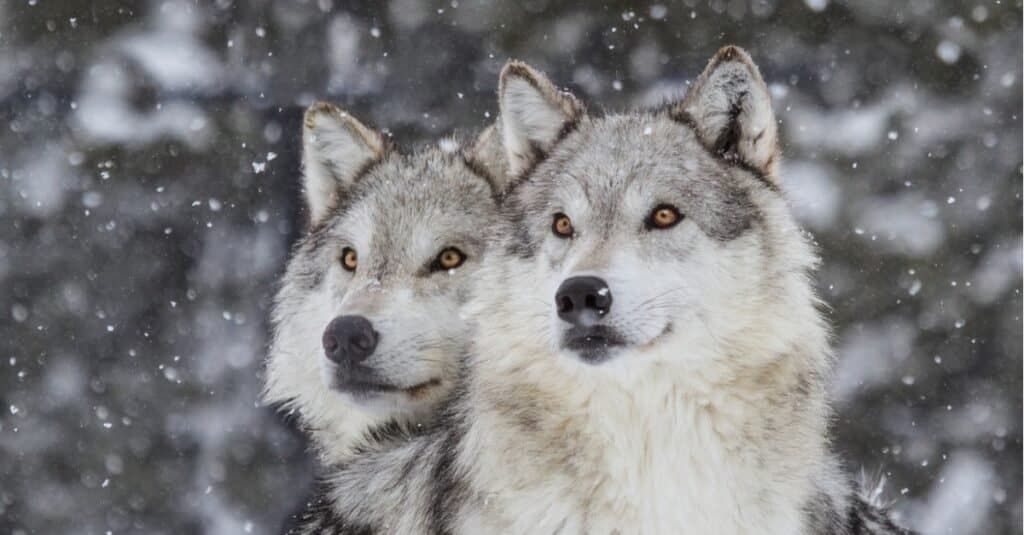By December 31, 2023, the Colorado Parks and Wildlife Commission (CPW) will reintroduce an experimental population of gray wolves into a portion of the animal’s historical range in Colorado. This plan was set in motion in November of 2020 when Colorado voters narrowly passed a statewide ballot, approving the reintroduction of Colorado’s gray wolves. The CPW proposed the plan under section 10(j) of the Endangered Species Act of 1973.
To gain federal approval for the plan, the CPW published a 261-page “Colorado Wolf Restoration and Management Plan”. It includes sections such as “Status of Elk, Deer, and Moose Populations”, “Wolves and Human Safety”, “Wolves and Domestic Dogs”, and “Monitoring and Research”. Additionally, the U.S. Fish and Wildlife Service published its 389-page Final Environmental Impact Statement (EIS) about the plan on September 19th, 2023.

In exciting news, the Colorado Parks and Wildlife Commission plans to reintroduce an experimental population of gray wolves into a portion of their historical range in Colorado.
©Luke23/Shutterstock.com
About Section 10(j) of the Endangered Species Act
The 10(j) section of the Endangered Species Act allows for the reintroduction of threatened or endangered species into their native or historical habitats to aid in species recovery. Specifically, this section covers releasing an experimental population into a geographically isolated section, away from other populations of the species. This means the gray wolf population in Colorado will not interact with other populations that exist outside the state.
Under section 10(j), this population of gray wolves is designated as “nonessential, experimental”. This eases some prohibitions and regulations associated with threatened species. In the case of gray wolves in Colorado, this designation will, for example, allow ranchers to kill gray wolves that are attacking livestock.
Reintroduction of Wolves into Colorado: The Plan
Under the current plan, Colorado will release 10-15 wolves on state and (approved) private land every winter for the next 3-5 years. The state plans to source the wolves from Idaho, Montana, or Wyoming, with Washington and Oregon as backup options. Under the plan, the CPW will only bring in wolves who live in an ecologically similar environment. This includes terrain and prey availability. As of the time of this writing, Idaho and Wyoming are not interested in supplying Colorado with wolves, citing concerns about the population spreading outside the intended areas. the state of Oregon, however, is more open to the plan.
If sourcing wolves is successful, the CPW will likely release the experimental populations into lower elevations near the Holy Cross Wilderness or in the Maroon Bells-Snowmass Wilderness.
Reintroduction of Wolves into Colorado: Is It Safe?
The public discourse around the reintroduction of wolves into Colorado is a bit divided. While many people are happy to welcome the gray wolves back into a portion of their historical range, others are concerned for the safety of livestock, pets, and people. So, how founded are these concerns? In the past 100 years, there have been only two fatal wild wolf attacks and both occurred in Alaska. In all of North America, over the past 100 years, records show 22 nonfatal wild wolf attacks. This data shows us that wolves would much prefer to avoid people, including confrontations. The risk of human injury from the reintroduction plan is minuscule.
More than 6 million head of cattle live in Montana, Idaho, and Wyoming. According to the U.S. Fish and Wildlife Service reports, According to the Colorado State University, the calculated percentage of cattle killed by wolves in these states is under 1%.
What about pets? Well, let’s look at statistics in Wyoming. in 2022, About 33% of Wisconsin households reported having a dog. That puts the number of household dogs in the state at about 2 million. And, that’s only counting this percentage as single-dog households. In 2022, residents in Wisconsin reported 18 attacks on dogs by wolves. Overall, all rates of attacks on humans, pets, and livestock by wolves in the U.S. are extremely low. Gray wolves, in contrast, are endangered in all of the contiguous states except Minnesota, where they are listed as threatened. The reintroduction of a gray wolf population in Colorado will hopefully aid in the recovery of this endangered species.

The reintroduction of gray wolves into Colorado represents hope for this endangered species.
©iStock.com/rogertrentham
The photo featured at the top of this post is © Holly S Cannon/Shutterstock.com
Thank you for reading! Have some feedback for us? Contact the AZ Animals editorial team.







